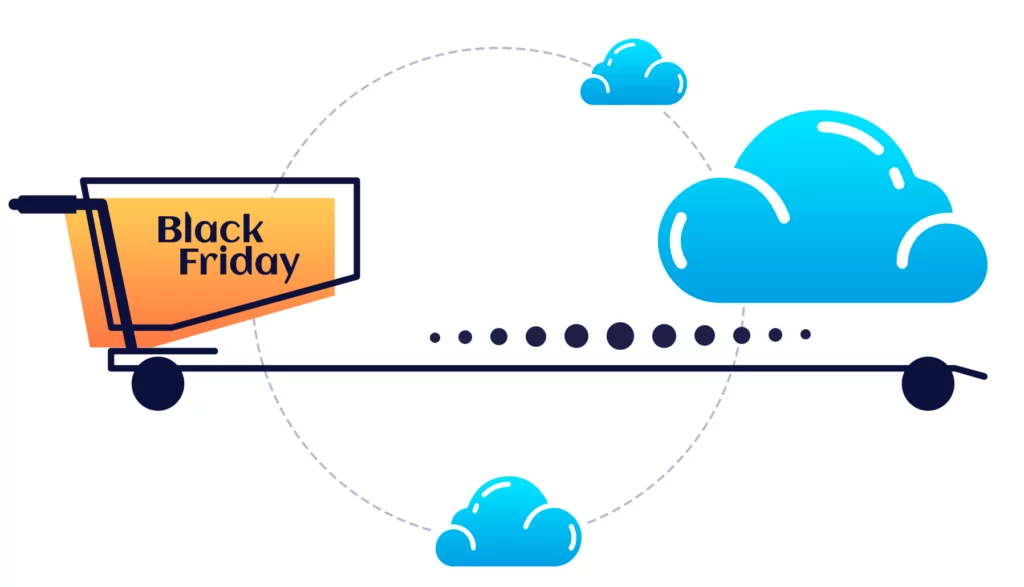Black Friday, which means the day of trial.

Black Friday, also known as the Day of Trials, originated in the USA. It always falls on the day after American Thanksgiving (the last Thursday in November) and marks the start of the pre-holiday shopping period, which is full of promotions and sales. Currently, due to its commercial nature, it is a global event. In America, online sales revenue on this day in 2019 amounted to $7.5 billion, which is 20% more than in 2018 and almost 40% more than in 2017. In 2019, most Americans did their Black Friday shopping online, precisely 142.2 million, while 124 million Americans visited brick-and-mortar stores. Although we don't see as spectacular deals in Poland as in the US (discounts on Black Friday in America can reach up to 75%!), since about 2015, there has been a significant increase in interest in this day among both buyers and sellers, especially in the field of online commerce. No wonder, as in 2018, the total turnover on that day exceeded PLN 2.3 billion, and the average value of a shopping cart during Black Friday in Poland has been steadily increasing from year to year: in 2016 it was PLN 280, in 2017 - PLN 375, in 2018 - PLN 426, and PLN 438 in 2019. Everything indicates that 2020 will be a record year for the e-commerce industry due to the coronavirus pandemic.
How did it start?
The term "Black Friday" referring to the Friday after Thanksgiving was first used in 1951 by the magazine "Factory Management and Maintenance". However, it was not used in the context of shopping but to describe a situation where many workers called in sick on that day to have a four-day weekend.
In the 1960s, the Philadelphia police began using the term due to the chaos and congestion on the roads caused by the crowds of people doing their holiday shopping. In the 1980s, the term became popular throughout the United States as a reference to the most profitable shopping day of the year and the best day for buyers to get deals. It has remained in this form to this day and has also spread to almost the entire world.

Get rich or die tryin'.
Although for shoppers, Black Friday is just one day (sometimes a week, as some stores organize Black Week), many people work for months in anticipation of this day. Above all, server administrators and e-commerce owners prepare for this event with special care, as the value of online purchases in Poland on this day is 176% higher than the daily average. Due to the increased traffic, this is a period full of tension and concern for e-commerce. This is because, despite technical and marketing preparations, unexpected problems on Black Friday can result in lower profits than intended. Such cases occur on this day, even for the best and largest companies. In 2016, the website of the American clothing store Macy's couldn't handle the load, and customers couldn't make purchases or take advantage of promotions. On our "backyard," a similar situation occurred in 2018 when customers of the X-kom store wanted to buy electronics at discounted prices, but instead of the store's homepage, they saw an error message.
Sometimes the situation looks different, and browsing the store's offer and adding products to the cart is possible, but problems arise when trying to finalize the order. In such situations, the number of abandoned carts reaches record levels, which may result in minor financial losses in the short term but could lead to a loss of trust by some customers in the long term. Therefore, in modern times, good preparation of network infrastructure may be more important than a good advertising campaign.
War never changes, but...
Every year, it happens that one of the e-commerce server admins is surprised by the amount of traffic on the server during Black Friday. If you want this day to end successfully in your store and not as a huge failure, be sure to prepare for increased traffic on the site, as many people wait for this specific day to make purchases. Here are a few ways to do it:
 \
\
1.First of all, remove all SPOFs (Single Point of Failure), meaning divide the infrastructure in such a way that the failure of one element does not result in the entire site being offline. To prevent this, set up an additional server for the database and application and use a load balancer to distribute traffic between servers. Then, several tasks need to be performed:
- Set up replication between databases
- Configure a load balancer in front of the servers
- Implement session sharing
- Add a cache server
- Adapt the application to work in the new infrastructure.
2.Move the store's infrastructure to the cloud. With this solution, you will be able to dynamically respond to the current demand for resources. This way, you will also reduce infrastructure maintenance costs.
3.When you have a small budget or little time, use a CDN (Content Delivery Network). It is a distributed network of servers that delivers content from different locations. This way, the service will be available more quickly from different places around the world.
4.Implement a queuing system. This works by setting a specific number of customers that the service can handle at a given time. If there are more interested customers, they must wait for their turn. This way, your servers won't crash, and customers already on the site can use it without any problems. There are companies (such as queue-it.com or netacea.com) that offer ready-made solutions that you can implement on your site.
5.Also, remember about updates and regular backups, which will be particularly useful if something goes wrong. If you don't know how to do this or need professional help, you can always turn to us. 😉
Good Luck